Description
About the book :
Caste is being used as a major weapon to shame Hindus. This crisp and easy primer presents a powerful counter to Western Universalism’s harsh attacks on caste. It is a long over-due toolkit to help all open-minded people gain an understanding of the subtleties of Hinduism’s complex social order. This social structure has, after all, produced a civilization with unparalleled diversity. The Vedic world view along with the historical journey of Varna and Jati demolishes the prevailing myths about caste.
ISBN : 9789392209345 ; Pages : 168 ; Publishers : Occam

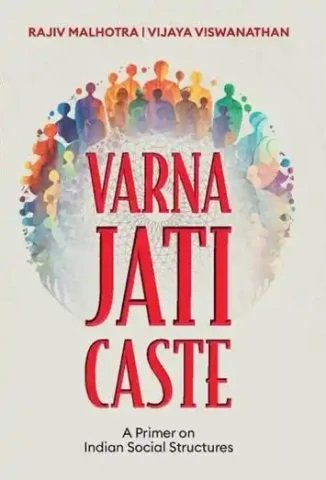

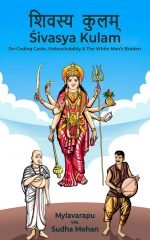
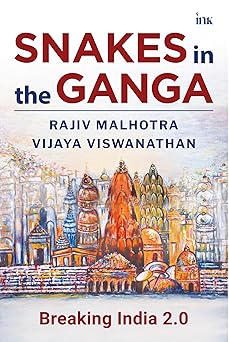
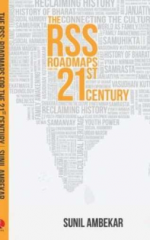



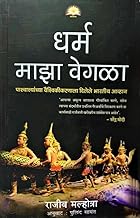

P V Raj Shekhar – :
Let me start with a confession, I am a fan of books of Rajiv Malhotra ji. When I saw this book Varna Jaati and Cast I was little disappointed because all his earlier books were big volumes with lot of references and quotes from various sources and their analysis. Basically, all the books of Rajiv ji fit in to academic and well researched category of Indic Studies from Indian perspective. My first thought on this book was “ how come such a small book of 145 pages will do justice to much complex, much debated, most polarised and most politicised subject.”
Upon reading, to my surprise I found this book covers almost in entirety the journey of Varna in Vedas to Jaati and to present form of Cast. Thus this book covers a civilization’s day to day life and interactions between different sections of the society at different time periods. Hence, a must read book for all those interested in Cast system and in civilisational journey.
This book is writted by Rajiv Malhotra ji and Vijaya Viswanathan ji. They started discussion from Vedas, how Varna is described there in. Then they went on to throw light on late Vedic period and Dharmasastas. Although, authors state that at no point of history, hindu samaj was following Dharmasatras entirely and no king enforced them. It was left to the society to develop their own way of life as suited to the people and region. Interestingly they give references to show that Dharmasastras were used only when disputes arised among two sections of society or when a new problem is faced like to decide what will be the Varna/Jaati of a child born from Brahman father and Sudra mother. Then they presented how Bhagavad Gita and Mahabharat dealt with Varna/Jaati and what’s these two present day popular scriptures actually stipulated.
After finishing with our scriptures, the authors gone on to discuss Jati/Verna in Buddhism, Islam and Christianity. This section is important to know that hindu society alone is not afflicted with this problem and this helps to counter the narratives built to single out Hindu society alone on this issue. This section also gives examples of many kings, rishis and thinkers who moved from one Varna to another due to their ability and how Hindu society effortlessly accepted and respected them in contrast to Islam and Christianity. This proves that there was no rigid system in ancient times neither as per scriptures nor as per social practices. For all practical purposes, the Varna system gave communities scope for passing of skills from one generation to another and form Guilds which helped them is trading and protected them from exploitation.
Authors dedicated an entire section to discuss how British social engineering created Caste and how present day politics made it in to vote bank politics. Interestingly, this section also presents views of Baba Saheb Ambedkar on caste and his written debates with Gandhi and Savarkar on this issue, which is very informative and throws light on how different leaders tried different approaches to get rid of this social problem.
The last but one chapter is most interesting and important part of the book. Here the pros and cons of jaati system are discussed very crisply. After reading this Chapter, I am sure, the readers, when look at present society, will surely find both pros and cons still at play to great extent. People over 50 years of age from rural background can relate to the points that are discussed in this chapter more intimately, as I found in my case.
The final chapter lists the present day narratives of vested interests and left ideology about Cast in Hindu Samaj and gives pointers to negate and debate these.
The beauty of this book is that it’s very short up to the point without compromising on subject . Further, unlike his other books of giving exhaustive information to the reader, in this case Rajiv ji and Vijaya ji left it to the readers to follow the pointers in the book, do their own study, dive deep into the subject and develop different aspects of this vast subject as per the needs of time and debates they encounter.
Nevertheless, had the book covered how and when discrimination and untouchability creeped in to the Varna/Jaati system making it most challenging problem of Hindu Samaj, the book would have been useful for all future generations for a long time. However, without this also the book is very informative and thought provoking.
HindueShop – :
Thank you for posting a detailed overview of the book.